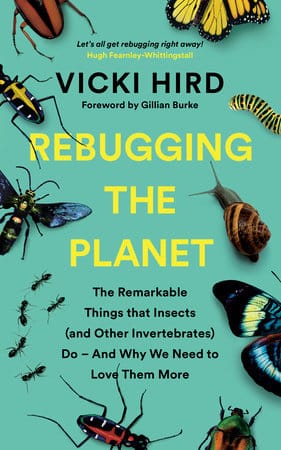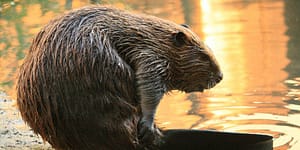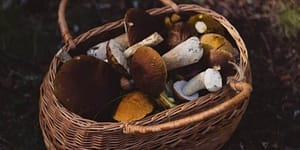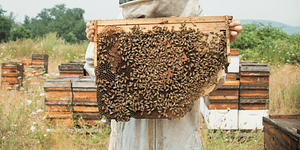Just Add Bugs: Rewilding in Your Garden
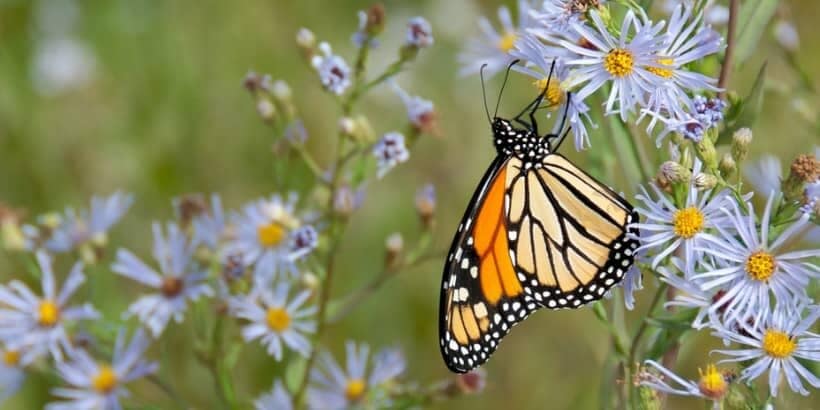
For too long, bugs have had a negative connotation associated with them. But what if we took the time to observe the benefits of insects?
It’s time to rebug our gardens, lawns, and parks!
The following is an excerpt from Rebugging the Planet by Vicki Hird. It has been adapted for the web.
Adding Bugs: Rewilding in Your Garden
What can you do in response to gain a stronger connection to nature? Small-scale rewilding can happen in your back garden and in your local park, as well as on a large estate or national park.
It can also be about what you buy and eat. I want the large-scale rewilding, too, where minimal interference by humans lets nature seriously take its course. And I want everything else in between.
A Good Start
The growing public appetite for all things invertebrate and their role in our lives has been wonderful to observe. From being fearful of insects, a growing proportion of the public has turned into bug lovers.
My friends, family and colleagues have made bee hotels, planted wildflower patches and left their lawns uncut. They send me photos to identify a bug such as a swollen-thighed beetle and even an exotic shield bug found in imported green beans. It has stretched my ID skills somewhat.
Understanding the Value of Bugs
It is true that there have been volunteer communities of dedicated bug observers for hundreds of years, documenting and drawing bugs so we have their invaluable records and illustrations showing species changes over many years.
But in the last decade or so there has been a huge groundswell of interest stimulated by various initiatives, such as citizen science projects like the UK’s Bee Cause campaign and the Western Monarch Count in the US. Programmes, too, like BBC Springwatch have been invaluable in generating public excitement in the UK about the variety of invertebrates, their life cycles and roles in nature.
I see a level of interest that was absent ten years ago, which is creating more bug lovers, more buzz and more people wanting to rebug.
Innovative campaigns by Buglife and other organisations have helped raise awareness and saved vital wildlife habitats and species.
The new and often youth-led Climate Strike and Extinction Rebellion events across the globe have also been transformational, featuring the loss of insects and nature frequently alongside the climate crisis.
But the joy of rebugging is that you can do it almost anywhere.
Give people the chance to act and to encourage some bees, or even hummingbird hawkmoths, in a green patch of land, and you can start to change hearts and minds.
From a Costa Rican municipality giving bees citizenship to an amazing three thousand food-growing spaces making space for nature in London, it is possible – and it is happening. Urban greening is not only possible but crucial.
The ‘rebugging’ title of this book was inspired by another, recent book Rebirding: Rewilding Britain and its Birds by Benedict Macdonald, who argues that to have more birds around, larger mammals must be allowed to do their work and re-engineer the landscapes.
Letting nature heal itself and letting it get messy is key to a revival in birds and other species. If we can use the lens of birds and beavers to understand rewilding, we should also use bugs.
 Getting More Bugs: Rebugging Actions
Getting More Bugs: Rebugging Actions
In your family, street, village, community, work, school, university, church. If you do one thing:
- Talk about bugs to everyone in your community, with friends and family.
- Show your love of bugs by sharing pictures of invertebrates. Take a picture of invertebrates you spot and share it on social media – the photos do not have to be perfect.
- When flying ants or wasps arrive, spread the love for them and counter the hate.
- Tell children you know why bugs matter. Find them a bug whenever you can and get them to talk about what they see and think. Use National Insect Week, Buglife and other great resources for inspiration and activities.
If you can do a bit more, try one – or more! – of these ideas:
- Support local charities to grow bug-friendly plants and parks. Join your local park friends’ group and ask them to replace pesticide use with alternatives (see Pesticide Action Network) and to grow flowers and let lawns grow.
- Grow flowers on bare soil in your area, such as around trees or on road verges.
- If your workplace has outside spaces or an accessible roof, fill them with flowers to encourage insects. Ask your colleagues to join in planting activities and explain that ‘weeds’ are food for bugs and birds.
- If you are at school, college or university, call for flowers, fruit and vegetables to be grown on and in buildings, and on the grounds. Ensure there are ongoing resources to manage the plots – you do not want it to disappear after you leave. Setting up a bug or insect club would help ensure your legacy lives on.
- Join in surveys like the Great British Bee Count and if you see anything that looks rare, check and send details to groups who log sightings.
- Talk to your local garden centres and retailers – ask them what they are doing to promote chemical- and peat-free gardening.
- Write to your council to ask them to plant more flowering plants, cut pesticide use and not mow or spray weedkiller on road verges, roundabouts and other urban spaces when in flower.
- Email your MP to tell them to act for bugs and whether they fail to respond or respond well, go to their monthly surgery to ask for action.
- Check your pensions and investments are not supporting pesticide manufacturers or companies that are known to be deforesting. There are ethical investment companies who can help.
Recommended Reads
Recent Articles
Beavers are ecological and hydrological Swiss Army knives. Capable of tackling just about any landscape-scale problem you might confront.
Read MoreWhen you’re walking around the grocery store looking at the vegetables, it’s probably hard to imagine that a century ago there was twice the amount of options.
Read MoreFor people who enjoy foraging for food in the wild, there are plenty of mushrooms to choose from — “ten thousand mushroom species to be considered on the North American continent alone”. But foraging for mushrooms should never be thought of as a game of chance. You need to know all the clues when it comes to identifying…
Read MoreNeed a new twist on kimchi? Look no further than this wild green kimchi! Experiment with what you have, anything from the mustard family will work extremely well.
Read MoreFor all the beekeepers and future beekeepers out there, this one is for you! Your journey to successful beekeeping begins with constructing a suitable haven for honeybees, otherwise known as the bee hive. The following is an excerpt from Raising Resilient Bees by Eric and Joy McEwen. It has been adapted for the web. Bees…
Read More
 Getting More Bugs: Rebugging Actions
Getting More Bugs: Rebugging Actions